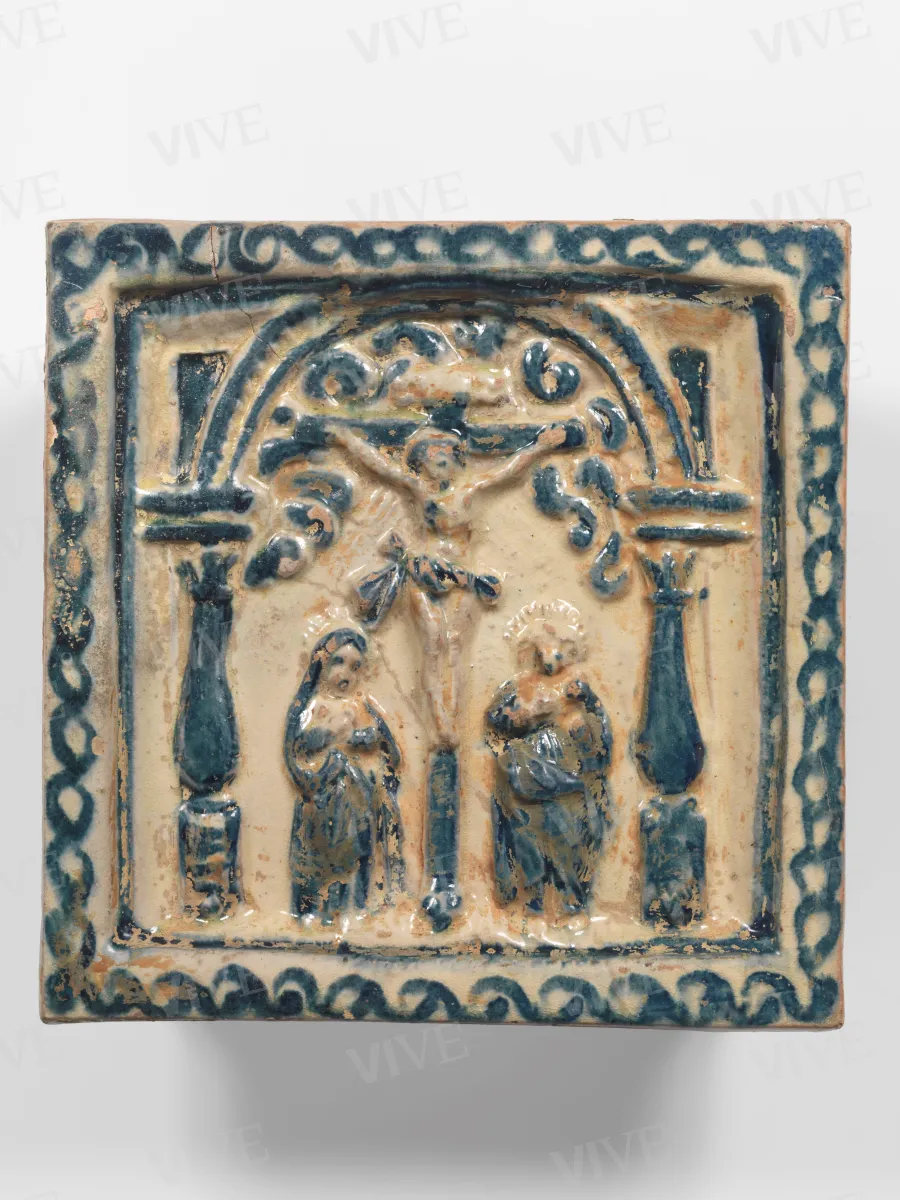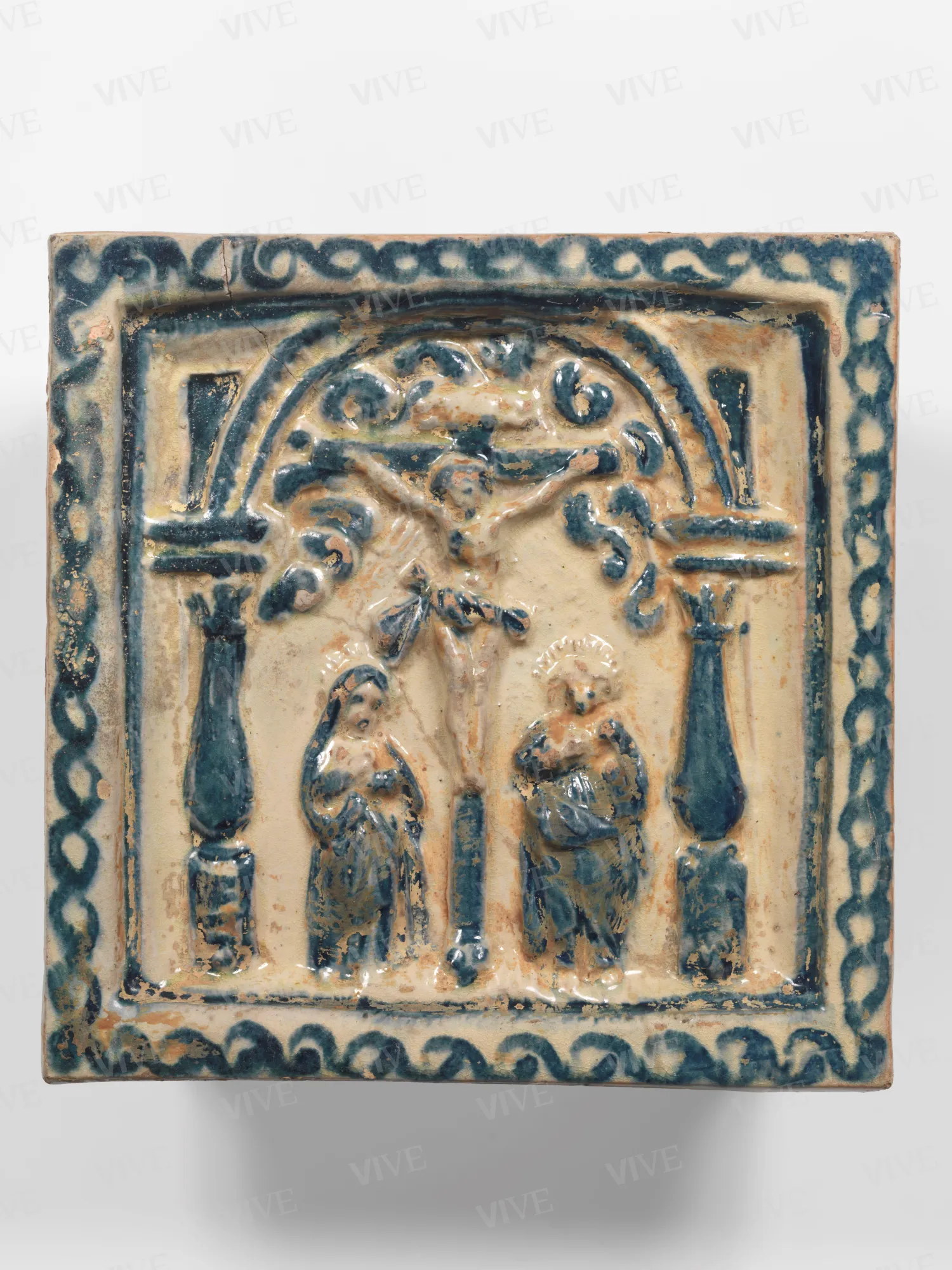Stove tile
Roman milieu C. 1490–1510
Quadrangular tile designed for a stove, featuring stanniferous enamel coating and adorned with a relief depiction of the Crucifixion.
Quadrangular tile designed for a stove, featuring stanniferous enamel coating and adorned with a relief depiction of the Crucifixion.
Details of work
Catalog entry
The National Museum of Palazzo Venezia has two tiles (inv. 962 TR 44; inv. 961 TR 43), along with four stove tiles from the demolition of the mezzanine vaults of Innocent III's tower in the Vatican, dated to the late fifteenth century. Additional examples were discovered in the Crypta Balbi exedra. The oldest record of stove use is by Andrea Gatari, citing Francesco da Carrara the Elder (1325–1393) who visited Rome in winter 1368 and had two custom chimney caps made at the hotel All’insegna della Luna. Also noted is Clement VII’s “stufetta” or “bagno” (1523–1534) at Castel Sant’Angelo.
This work has never before been displayed.
Luca Pesante
State of conservation
Good.
Provenance
Rome, Giulio Corvisieri, 1935;
Rome, Museo Nazionale di Palazzo Venezia, 1935.












